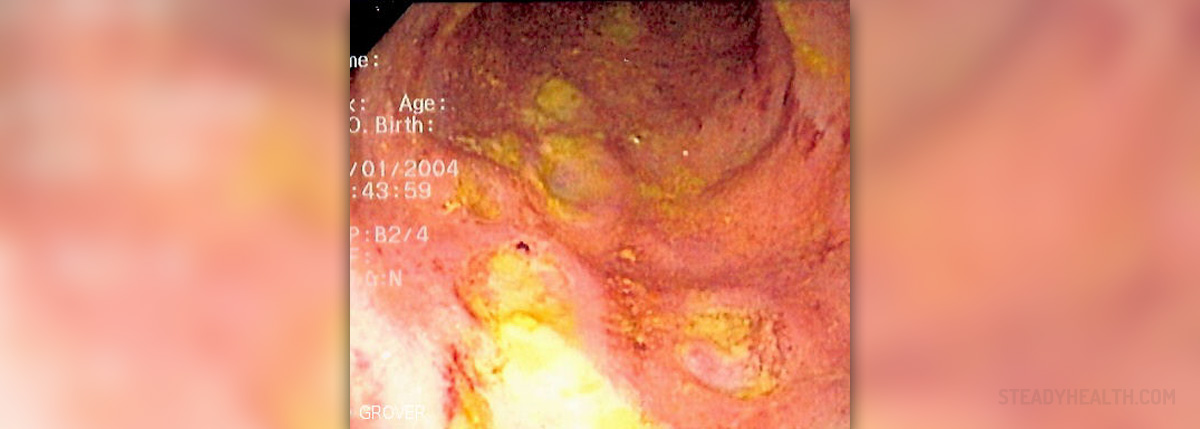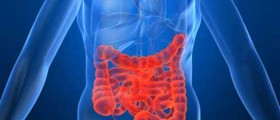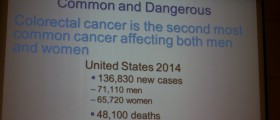
Crohn's disease is a one of two inflammatory bowel diseases. The other one is the ulcerative colitis. Crohn's disease refers to the inflammation of the mucous tissues of digestive tract. Crohn's disease can be mild or severe, and symptoms can occur suddenly or gradually. Diarrhea often occurs in people who suffer from Crohn's disease. The inflammation that occurs leads to greater production of water and salt which the colon can not absorb. In addition, there is even a severe intestinal cramping. Besides diarrhea, abdominal pain and cramps are common symptoms of the Crohn’s disease. Sometimes the inflammation can cause swelling of the walls of the bowel and lead to thickening with a scar tissue which makes food passage more difficult through the gut. As a result, there is pain and cramps, and in some cases nausea and vomiting.
One of the symptoms of Crohn's disease is blood in the stool. This blood appears only when bowel are bleeding or when sore tissue bleeds when the passing food through the digestive tract irritates it. Sometimes, as a symptom of Crohn’s disease ulcer occurs. The ulcer appears as a result of small wounds on the surface of the intestine wall. Occasionally ulcers in the mouth are even possible. In patients suffering from Crohn's disease, loss of appetite and weight are normal because stomach pains and cramps interfere with normal digestion and absorption. Furthermore, as symptoms of severe Crohn's disease fever, fatigue, arthritis, inflammation of the eyes, inflammation of the liver and bile, and skin disorders may occur.
It is important to consult the doctor if some of the symptoms appear, such as bloody stool, fever which last more than a day or two, abdominal pain and diarrhea. Irritable bowel syndrome, diverticulitis and colon cancer are the three main causes of Crohn’s disease. The physician can diagnose this disease only after he gets results from several tests. The patient must go through blood test, fecal occult blood test, colonoscopy, flexible sigmoidoscopy, barium enema, small bowel imaging, computerized tomography, and capsule endoscopy. The physician might suggest blood test to check for anemia, and with fecal occult blood test blood in the stool is checked. In colonoscopy, the doctor can see the entire colon with a thin and flexible tube which is lighted and has camera at the end. In flexible sigmoidoscopy the sigmoid is examined. With barium enema large intestine is evaluated, while the parts of the small bowel are examined with small bowel imaging. Capsule endoscopy is the procedure when the patient swallows the capsule which has the camera inside. This camera takes pictures which are shown on the computer monitor. After that this capsule is ejected from the body through the stool.

















Your thoughts on this
Loading...